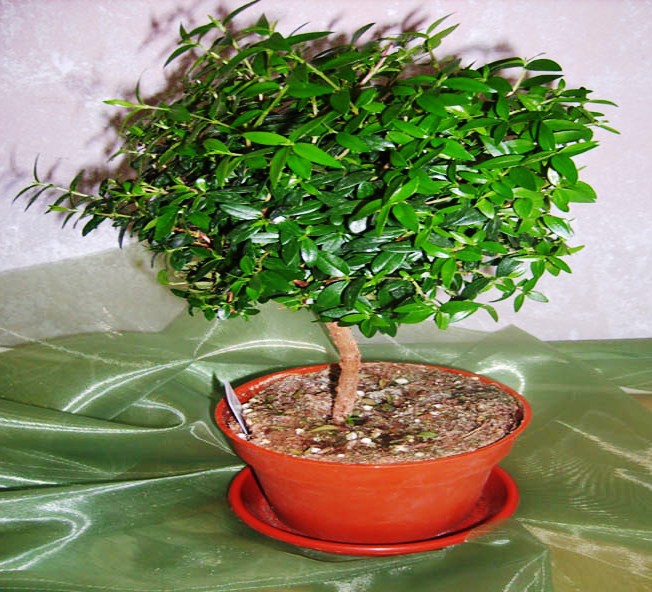You will need
- film or glass jar;
- - a pot and a tray thereto;
- - the spray gun;
- - nutrition for plants;
- - humus, sand and soil mixture.
Instruction
1
Myrtle is propagated by cuttings during the warmer time of the year. Branches with a length of 7 - 10 cm placed in a moist and loose soil or sand, covered glass jar or wrap and put in a bright but not Sunny place. "Shelter" is sometimes removed, clearing the soil to prevent it from souring.
2
Seedlings are important for a bright light with a small amount of direct sunlight. In the middle of the day, the plant should be closed from the hot sun. The best place to pot the Myrtleom Windows in the living room, facing East or South. It is important that in the winter the room temperature never dropped below six degrees. In summer the plant should stand on a balcony.
3
The required sapling soil mixture of equal parts of compost, turf and leaf soil and sand. Myrtle, regularly watered, it was time to settle down in a day or more. Constant humidity earthen clod - an important condition for the correct development of the trees, and the drying of the soil, the plant may die. In addition, Myrtle is often to spray, because it likes moist air. To provide a high humidity, you can keep a pot of MyrtleOhm in a wide pan with water. Water in the pan should not stagnate.
4
From early spring to late summer Mirt feed complex fertilizer for houseplants every two weeks. Large trees in the upper layer of the earth once during the summer you can mix the humus.
5
Transplanted Mirt if necessary, if the sapling is small pot. Because the Myrtle is growing quite rapidly (in two months the tree can reach a height of 20 cm), young Myrtles require transplant each year, and Myrtles older transplanted every two or three years. Transplantation is preferably carried out in the spring.
Note
Myrtle is beginning to bloom and bear fruit after 4 to 5 years after planting.
Useful advice
A pot of Myrtle should not be placed near the heating system, because it is native to the Mediterranean and therefore to be negatively related to increased dry air.

